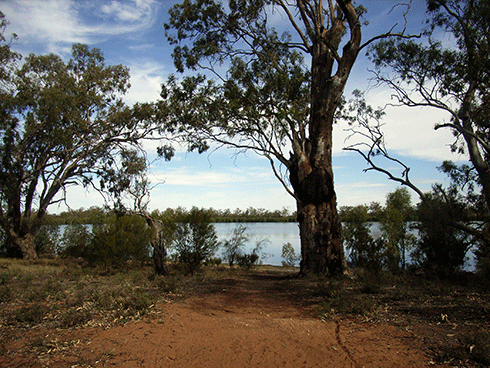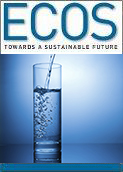
|
Published: 21 October 2013
Water works spread environmental flows further
Victoria’s Hattah Lakes Environmental Watering Program was recently awarded the 2013 Banksia Sustainability Award for Water, with the judges noting the project ‘demonstrated how to manage a long-term, multi-objective project whilst achieving environmental and social gains’.
The Hattah Lakes system is part of the 48,000 hectare Hattah-Kulkyne National Park, 60 kilometres south of Mildura. River regulation and a changing climate mean the lakes now fill naturally less often and for shorter periods.
The Mallee CMA coordinated the environmental watering program, on behalf of the Victorian Government and in partnership with the Victorian Department of Environment and Primary Industries, Parks Victoria and the Murray Darling Basin Authority.
‘The Mallee Catchment Management Authority (CMA) entered the Hattah Lakes program in the Banksia Awards to acknowledge the ongoing and important involvement of partner agencies, organisations and community groups in the protection of this iconic lake system,’ Mallee CMA Board Chairperson Sharyon Peart said.
Ms Peart made special mention of the community involvement in the Hattah Lakes Environmental Watering Program.
Emergency action was taken in 2004 to help return water to Hattah Lakes. Early environmental watering was conducted with temporary pumps on the river bank but, since then, local knowledge and innovative thinking has helped to consistently improve the efficiency and effectiveness of the program.
Lessons learned throughout the pumping program informed plans to use permanent infrastructure to secure a long-term, sustainable future for the system by taking a triple-bottom-line approach.
The result was one of Australia’s largest environmental works projects, which included the construction of a permanent pump station, regulators and environmental levees.
Completed during 2013, this infrastructure makes it possible to use available environmental water efficiently and effectively to water the lakes when river flows alone are not sufficient to reach the lakes.
The infrastructure will be used to deliver water to fill the lakes every two to three years, with more extensive watering to reach the floodplain every eight years, subject to natural cues and water availability.
Approximately half of the water used in the more extensive managed watering events will be returned to the Murray River.
‘The Hattah project is a good example of how environmental works and measures can offer more accessible and effective ways to achieve environmental outcomes in wetlands and floodplains along the Murray,’ Ms Peart said.
‘Using water more efficiently means environmental outcomes can be achieved without further significant economic impact on communities.’
Construction of this infrastructure was funded through the Murray Darling Basin Authority’s The Living Murray Program, which is funded by the Victorian Government and other Basin states. The constructing authority was Goulburn-Murray Water.
Source: Mallee CMA




